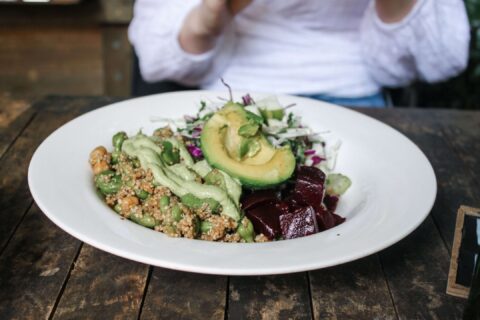Feature
Regenerative Agriculture Falls Short As a Climate Fix, New Study Finds
Research•5 min read
Perspective
There’s are reasons behind what we eat, whether it’s how much sugar we eat or why we feel so much better eating plants.


Words by Matthew Zampa
This book is fascinating. We all get hungry, have cravings, and don’t really know why. Let Rachel Herz’s Why You Eat What You Eat: The Science Behind Our Relationship With Food (W.W. Norton & Company 2019) tell you exactly why you eat what you eat in intricate detail. Dietary science is something to wrap your head around–in a bittersweet kind of way–and this book will help you do that.
It goes without saying that there are different tastes (five or seven depending who you ask) and that we each perceive them a little differently. There’s a reason why kids like sweet things, and why so kids like sweets up to 29 times more than others if you do the math. But why?
Essentially, there are two “sweet” genes that help determine how sensitive you are to sweets later in life. But for children, their genetic predisposition to bitter taste determines how sensitive they are to sweet taste. Adults tend to eat more sugar the less sensitive to sweets they are. For kids, the more sensitive they are to bitter taste, the more sugar they tend to eat.
There’s are reasons behind what we eat, whether it’s how much sugar we eat or why we feel so much better eating plants.
Get this. There are actually two ways to smell things. When you smell something through your nose, presumably with your mouth closed, the scent information goes to the part of your brain that processes memories, emotions, and motivations.
But when you exhale scent information through your mouth while eating, the scent molecules travel to two parts of the brain: the smell and taste centers. That’s why some of your strongest memories may come from meals that your mother cooked for you or a dessert that brings you back to your childhood. Food memories are made with smells.
Disclaimer: This book references the smell of bacon too much. If you need to, skip over these sections. They’re not long and used to compare the experience of smelling food, say a strawberry, with smelly perfume.
The scent molecules are not intrinsically different, but the experience of smelling them is. You smell perfume with your nose and strawberries with your nose and mouth.
You might eat what you eat because you like the taste, but your deepest, most vivid food memories all come from smells you almost forgot about. Try one on for size. Think about the best meal you had last year. Can you taste it? Or can you smell it?
Tasty smell. Think about it—tasty smell—it doesn’t make any sense. You can’t taste a smell, or can you? When you add vanilla to almond milk, the almond milk is “perceived as substantially sweeter,” and that’s because of the scent of vanilla.
“So all of us a lifetime of sweet associations with vanilla, which is why the scent makes whatever it is in seem sweeter, and also why vanilla is the most universally liked scent.”
But why do smell and taste work together so well? Basically, food tricks the brain into thinking it tastes like it smells and it smells like it tastes. When your brain processes smell, it activates the taste center of your brain.
Over time, as Herz puts it, our brain learns to taste with our nose. That’s why packaging becomes so important for food manufacturers. The way smell is released from a bag of chips changes the taste.
That’s how aromatherapy works. Imagine you’re in a nice bubble bath full of lavender bath salts. You’re trying to relax, and you do, but not because the lavender is acting on your brain. Lavender has been associated with a relaxation through its repeated use in body oils, shower gels, and lotions (further reinforced through clever branding). But if you don’t like lavender or have never smelled it before, it’s clinically proven that no relaxation will occur—from the lavender, that is.
Research shows that the closer you sit to the dessert bar at the cafeteria at lunch today, the more likely you are to eat dessert. According to Herz, people will even eat more ice cream if the top of the ice cream container is left open in the freezer. That one makes no sense. I mean, freezer burn alert!
The plain and simple fact is that the closer you are to the food, the more food you will eat. We eat more when we see more. That goes for food labels, too. If there are more pictures of cookies on the box, we’ll eat more when we get to the real thing inside. The same goes for chips and candy and you’re starting to see why America has an obesity problem now, right?
It’s mind over matter when it comes to eating. “The environment that we are in, from our physical proximity to food, to our psychological perception of what we are eating, to the social setting, all powerfully influence our appetite and intake.”
That’s certainly a mouthful. But it brings about the last point about why you eat what you eat. What you eat is as much a part of your lifestyle as it is the lifestyle of everyone around you. If you surround yourself with people living positive, healthy lives, you’re more likely to live one too.
If you’re going to bring this up in public, you’re probably going to have to bring the book. Point to these pages and say, “See, it says so right here!” Or maybe you like to memorize your facts.
Spoiler alert. This is not a weekend read. Why You Eat What You Eat is a dictionary of dietary science and its connection with the body that’s as informative as it is novel and absolutely delightful.